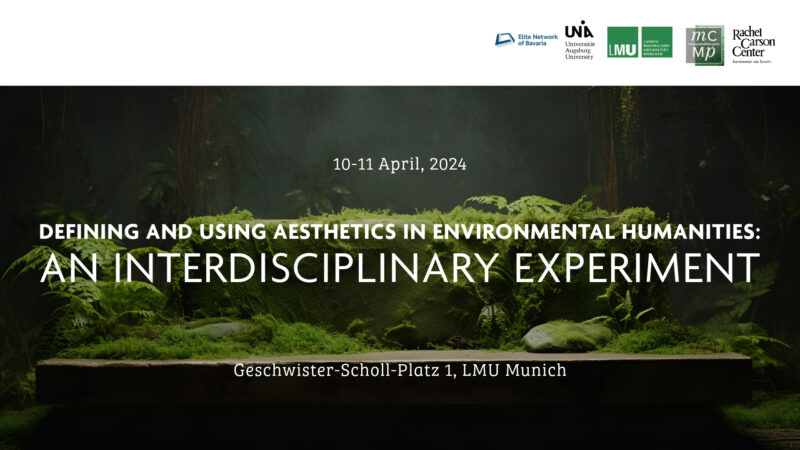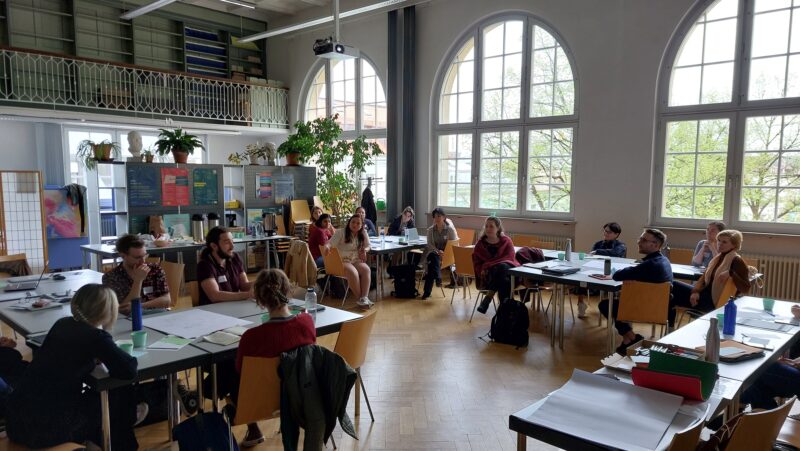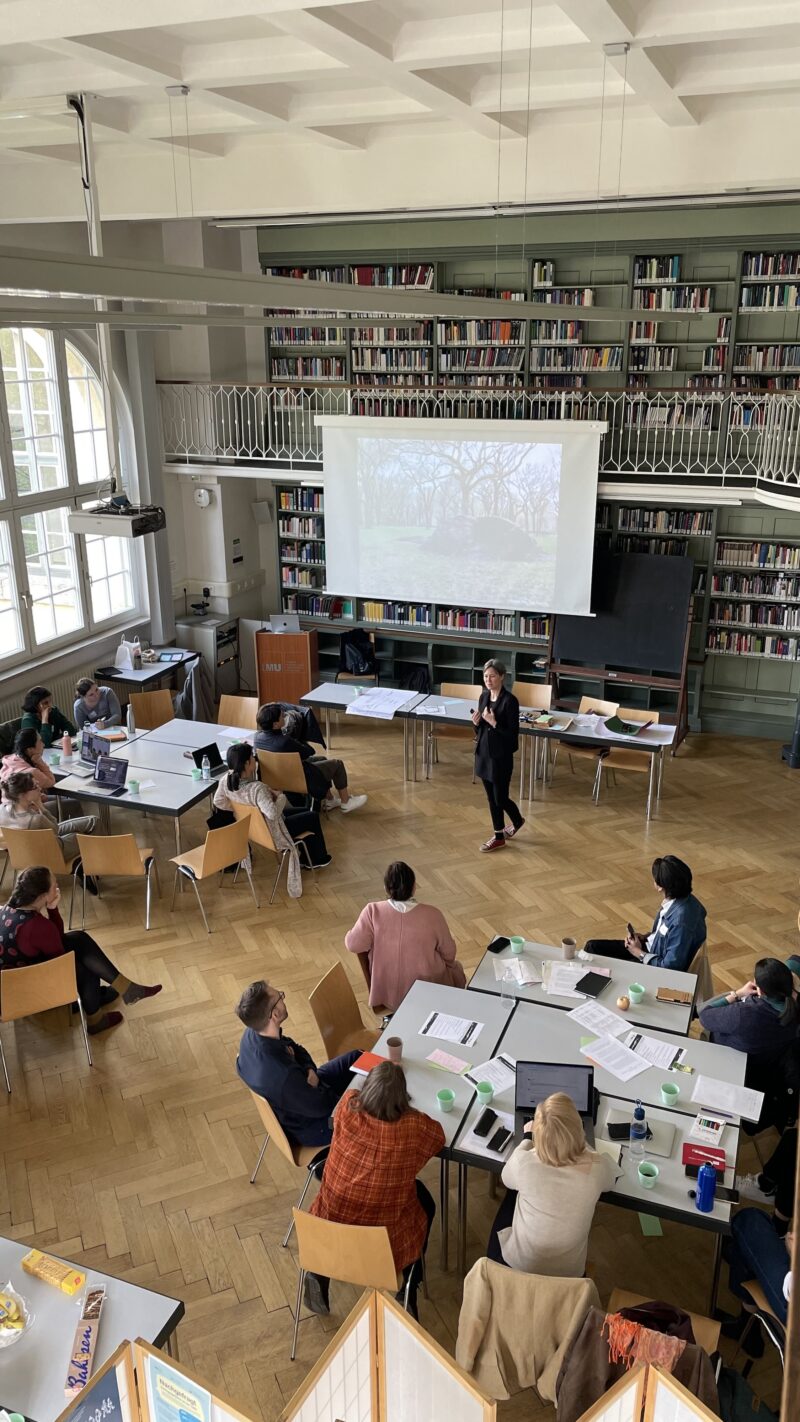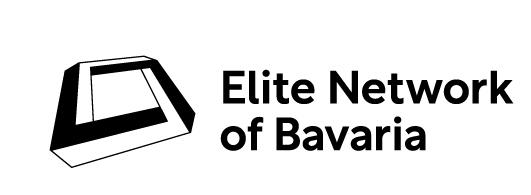
Workshop-Review: “Defining and Using Aesthetics in the Environmental Humanities: An Interdisciplinary Experiment
written by Katie Kung, Alice Murphy and Floris Winckel
Organisers: Alice Murphy (LMU), Floris Winckel (LMU / RCC), Katie Kung (LMU / RCC), Laura Fumagalli (UniA), and Lucia Medici (UniA)
1. Summary and Objectives
Having started as a reading group, we, the workshop organisers, come from different disciplinary backgrounds – from history, literature to philosophy – with a shared interest in environmental humanities and aesthetics. Thanks to the support by the Elite Network of Bavaria as well as the IDK Programme of Augsburg University and LMU, this shared interest developed into a two-day workshop which brought together scholars at different career-stages from multiple disciplines.
We had three main aims in mind for the workshop. We wanted to gain a better and more comprehensive understanding of the concept of aesthetics, particularly its relevance and value to the environmental humanities. We also wanted to identify and explore new and interesting ways to apply aesthetic concepts in practical contexts. But most of all, we wanted to engage with this concept from an interdisciplinary perspective, fostering communication across disciplinary boundaries and hopefully encouraging future collaborations. To maximise exchange between participants, we emphasised group discussion and activities, including a “speed dating” exchange and discussion exercises in smaller groups.
But we were also very fortunate to have two experts on aesthetics and the environment give opening and closing keynote lectures. The former, held on the evening of 10 April, was given remotely from Texas by Professor Emily Brady, a philosopher and leading scholar of environmental aesthetics. In her lecture, she provided an overview of the current state and prospects of aesthetics scholarship in the environmental humanities, highlighting key issues in discussions surrounding this concept. We returned to many of these issues the following day, which consisted of three sessions and a concluding keynote by Professor Sonja Dümpelmann, co-director of the Rachel Carson Center. During the first two sessions focused on developing a conceptual foundation for aesthetics and its relevance to environmental issues, whilst the third session shifted to its practical applications, looking at two prepared case studies. The concluding keynote on landscape architecture weaved together some of the themes that had been discussed over the course of the day, whilst offering a forward-looking perspective on the role that aesthetics can play in shaping environments.
Below you will find a more detailed account of the workshop.

2. Morning Session
The goal of the first session was to focus on the concept of aesthetics and its role in understanding our relationship to the environment. We started with a summary of Emily Brady’s keynote, emphasising the crucial takeaways of her approach. We then engaged in a group discussion of her talk, with participants raising what they found most interesting and/or how the talk insected with themes in their own research. This provided a helpful snapshot of the range of viewpoints in the room. Participants were then asked to write down five words that they associate with the term, and to provide an example where aesthetics and environment converge. These answers were then shared via a 30 minute “speed dating” activity: participants mingled and discussed their written responses, comparing perspectives and refining ideas, switching discussion partners every three minutes.
The second session continued the focus on developing a conceptual understanding of aesthetics across disciplines. After a brief reflection on the first session, we presented three philosophical themes that stem from aesthetic considerations of the environment: Aesthetics and Ethics (e.g., how aesthetic evaluations of the environment are related to ethical concerns); Aesthetics and Representation (e.g., how representations (artistic or otherwise) of the environment affect the way we experience the environment); and Aesthetics and Subjectivity (e.g., how aesthetic experience and knowledge relate to one another). Participants were invited to self-organise into these groups based on their core interests, and given about 40 minutes to explore their theme. Conversations were lively and productive, covering shared issues and questions among participants, as well as addressing points of tension. Following this, a representative from each group synthesised the key insights that had emerged from their discussion for the rest of the participants.

3. Afternoon Session
After lunch, participants were encouraged to put into practice what they had discussed in the morning sessions. To do this, we offered two “case studies”: the ways aesthetics of nature are mobilised in urban areas, and the way aesthetics features in the most recent IPCC assessment report on the impacts of climate change on natural and socio-economic systems. The sessions started with short introductions to the two case studies, after which participants chose which one they wanted to work on. Over the following 75 minutes, they engaged in group and 1-on-1 discussions, exploring the different aesthetic dimensions to each case study.
In the urban aesthetics of nature group, participants were first introduced to various ways that the idea of “nature” can be evoked aesthetically in urban environments. These included the use of window flower boxes, camouflaged trash bins, community gardening, and the interior design of Mediterranean restaurants. Participants were then asked to pair up and find images of their own examples of how aesthetics of nature is mobilised in urban areas, for whom, and by whom. All participant’s images were then discussed as a group. For instance, one participant with a background in ethics and political science noticed how wood, replacing leather, is becoming a popular element in luxury design, as seen in the interior of the German ICE first-class train as well as high-end watches, denoting a possible switch from “bad” to “good” natural products. Another participant, who came from a city troubled by air pollution, recalled how the handful of city gardens and “greening” landscapes in the city had brought her joy and peace, even if efforts to remediate problems such as air pollution may produce a negative aesthetic effect, as mentioned by Emily Brady the previous evening.
In the IPCC group, we identified several key issues when it comes to the use of aesthetics in the latest assessment report on impacts, adaptation, and vulnerability to climate change. For instance, we were interested in whether and to what extent the concept of “aesthetics” needs to be precisely defined in such reports, and specific criteria for measurement set, bearing in mind that we tend to want to be pluralist about aesthetic experience. The issue of human well-being is a pertinent example of this: it seemed that aesthetics was assumed to be closely related to well-being in the context of the report, so should scholars focus more on defining the link between aesthetics and well-being? Another issue that was discussed related to the difficulty of expressing or conveying aspects of climate change aesthetically, perhaps most notably carbon emissions or future sea-level rise. Here is where we might encounter the limits of aesthetics in helping us understand impacts and vulnerabilities, or perhaps new opportunities? Finally, drawing inspiration from Emily Brady’s lecture, we wondered whether aesthetics might serve as a bridge between natural sciences, social sciences, and the humanities, for instance in approaching a topic such as planetary health. We were aware of the fact that as we spoke, two floors below us, the inaugural LMU Global Health Day was taking place, featuring researchers from a wide variety of disciplines. It might be that broad church initiatives such as these may be where environmental aesthetics could play a role in connecting scientific perspectives, because as we found in the first two sessions, many of us have an intuitive understanding of aesthetic experience, even if we do not call it that.
4. Closing Remarks
To wrap up the day, we were very happy to have Sonja Dümpelmann to deliver some closing remarks and a keynote on urban planning and landscape architecture. As a landscape historian, she added yet another perspective of environmental aesthetics to the workshop, noting how aesthetics is studied and applied in the intersection of functionality, politics, and environmentalism.
In the short feedback session that followed, we were happy to hear that the participants enjoyed the open and multidisciplinary discussions they had during the day. We were also very happy to hear that the workshop has brought some of them deeper insights into environmental aesthetics, beyond it being a synonym for beauty. Some also suggested that participants from other disciplines like psychology and natural science should be invited, if this workshop ever received a second edition.
We hope that the workshop aided the participants in the integration of aesthetics in their own research. The sessions stimulated creative thinking about the use of aesthetics across various disciplines and case studies. We hope to have successfully established new networks and paved the way for further collaborations across different institutions and areas of expertise.
We would like to thank Emily Brady and Sonja Dümpelmann for generously participating in our workshop – the whole group benefited immensely from their contributions. We would also like to thank the participants who travelled from Augsburg, Erlangen, and even Berlin for travelling all the way to Munich. We hope all the participants have been able to bring back some of the discussions we had to their home institutions. Thank you to all those who attended the online opening keynote, and especially to those who contributed insightful questions. Finally, we are very grateful for the support of the Elite Network of Bavaria and the IDK Programme which made the workshop happen. This gratitude also extends to the Center for Ethics and Philosophy in Practice, for offering their beautiful library room for the day – we could have hardly imagined a more appropriate location for the workshop.
